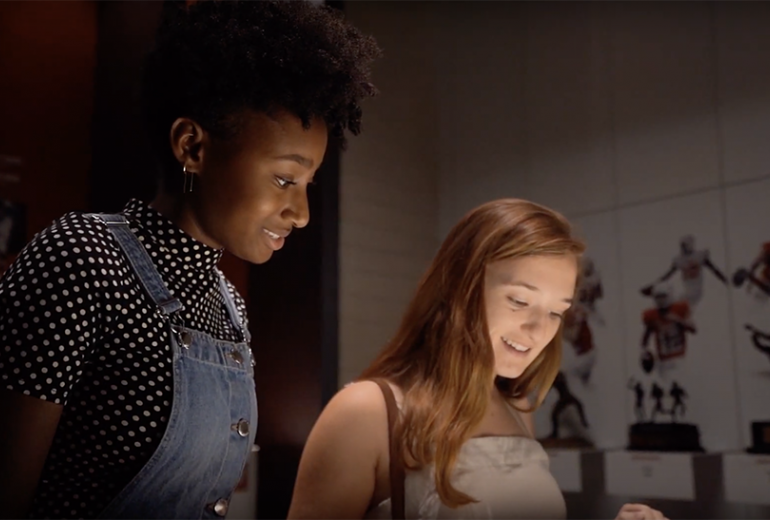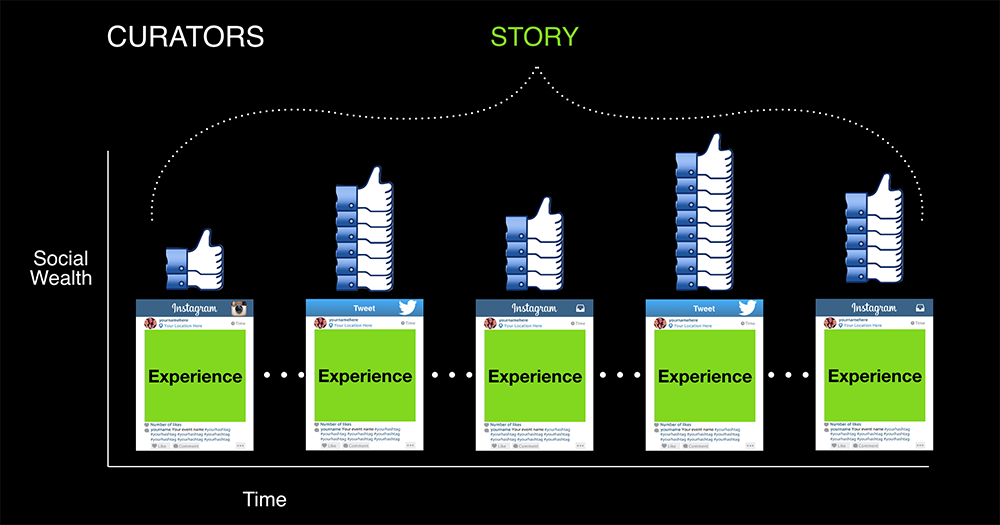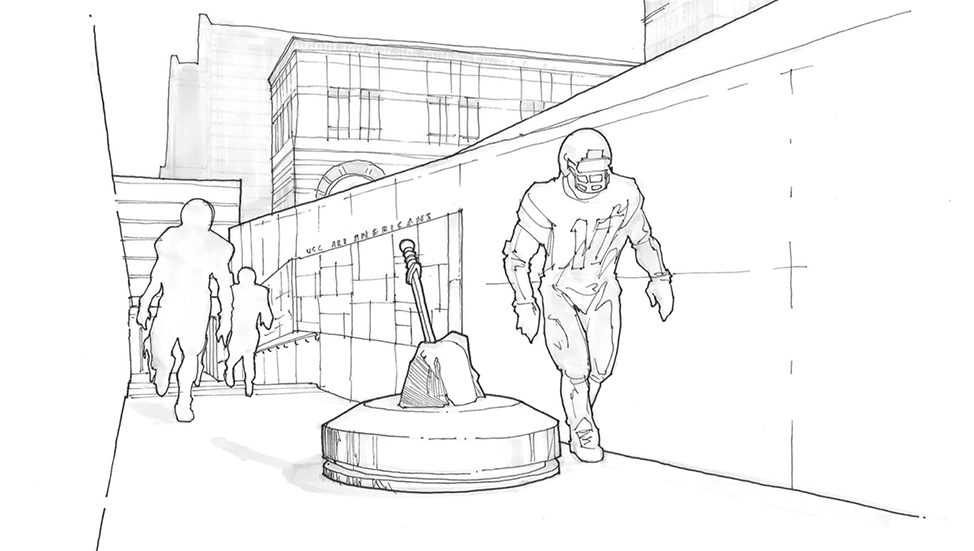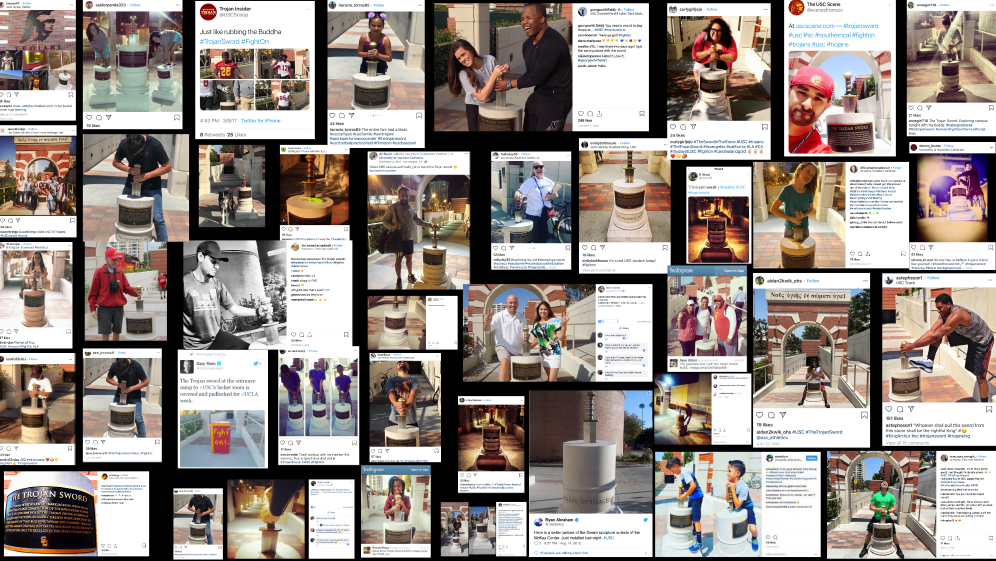College Sports Facilities
Recruiting
Building Culture through Elevated Moments

Recently, I attended a leadership symposium of collegiate athletic professionals who all face a similar challenge–how to effectively and consistently lead in a culture that is constantly changing. The session prior to my presentation was titled, “Culture Eats Strategy for Breakfast,” and this was a common theme throughout the conference. I don’t want to discredit strategy, and I’m sure my team knows that I won’t downplay its importance, because I am obsessed with the plan. But when culture is clicking, it does seem to ease the tension and demand for strategy. I had the opportunity to share a few of my own ideas about how, as leaders, we are able to utilize elevated moments to implement strategy and influence culture.
Management style consists of two main levers on your control panel–one is strategy and one is culture.
So first, let’s talk about this idea of strategy. This rational set of plans. It’s data-driven. It’s typically a written document. It’s the logic behind where your organization is trying to go. But culture is a little bit more elusive. Culture is this kind of network of values, beliefs and norms of the people that you’re working with; the people that you’re leading.
If you think of a sailing ship, the strategic plan is the path. It’s the map. It’s the set of coordinates that we’re going to try to follow. But just like that sailing ship, storms are going to come. Unforeseen circumstances are going to happen, but the wind, the wind that gives flight to the sailing ship is the culture. That’s the thing that adds the mojo. That’s the thing that adds the spark.
 Strategy is the simple questions we think about. “What are we doing? What is our purpose?” It’s also about what makes us unique or different. As we get to work with various athletic programs and organizations, one of the things that becomes so critically obvious to us is you have to decide what makes you unique. Don’t try to be like the other programs. Try to set your own course of what makes you unique, and special, and meaningful to your audience.
Strategy is the simple questions we think about. “What are we doing? What is our purpose?” It’s also about what makes us unique or different. As we get to work with various athletic programs and organizations, one of the things that becomes so critically obvious to us is you have to decide what makes you unique. Don’t try to be like the other programs. Try to set your own course of what makes you unique, and special, and meaningful to your audience.
But culture is this notion of “How will we do it?” Because what happens is good leaders execute plans through people.
Our firm has been around since 2000. We’ve had the privilege of doing over 2200 projects, and we’ve worked with over 200 colleges and universities, mostly in helping them to tell their story, and helping them to prepare their physical space for a way that reinforces their culture. But we constantly refer to our purpose. We say that Advent creates experiences that move people.
You’re in that same business as us. You’re in the business of moving people, because see, you’ve got to persuade that coach to become an employee of yours when he or she has plenty of other options. You’ve got to persuade that employee to stick around even though they have a better offer somewhere else. You’ve got to persuade those recruits to choose your school when maybe the other programs turn out more players in the pros. You’ve got to persuade your donors and move them to contribute to your program, even though right now college athletics has this cloud of scandal and uncertainty around it, and there are lots of other nonprofits where they could contribute.
So your job is similar to my job. We’re in the business of moving people.
But how can you be a better leader in cultivating your culture?
The future of universities currently lies with millennials and centennials. We’ve talked about this in the past, and I’m sure it’s part of your conversations, but the idea of how they use social media to create this story they’re telling about themselves is key. They gather these experiences or moments, and they try to encourage and accumulate likes, which becomes their social wealth. But over time on social media, centennials and millennials are using the combination of these experiences to create their story. The most recent data we have says that centennials are spending … You ready? Two hours and 55 minutes per day on social media.
 So how do we use this natural proclivity, this natural tendency, within the audiences that we serve to harness something for our advantage? Part of what we do is look at physical spaces and think about, “Where could there be an Instagrammable or social media moment? How do we design it into the plan, into the journey of the athletes, the recruits, or the fans?
So how do we use this natural proclivity, this natural tendency, within the audiences that we serve to harness something for our advantage? Part of what we do is look at physical spaces and think about, “Where could there be an Instagrammable or social media moment? How do we design it into the plan, into the journey of the athletes, the recruits, or the fans?
To illustrate this, think about an individual, and you can name the individual. I’m going to use a recruit as an example, but it can be a colleague, coach or any individual you’re trying to move. Think about that individual and how they appropriate stories and high moments within their day.
It may go like this. Let’s say it’s a student athlete, and they come in, and the coaches surprise them by providing pancakes instead of the healthy oatmeal that is constantly being provided. And just like we’re seeing with young millennials, 50% of folks are Tweeting and Instagramming about their food. 50%. And maybe another point was for an assignment, any assignment, either an academic assignment or an assignment you’ve given as a manager. Somebody got a good response, a good grade, good feedback, a good assessment on that assignment.
And then lastly, on their walk home or on their drive home, there was this breathtaking sunset. And they get around the dinner table, just like you and I would, the person across the dinner table says, “How was your day?” And instead of giving this kind of journalistic style of accounting about our day, we summarize our day in these high points. “Well, coach made breakfast. You should’ve seen coach in an apron. He was making pancakes.” “Then I got good feedback on my assignment. I really feel like I did well. And did you see that sunset on the way home?” Those three moments combine to summarize our day.
 I get it. Pancakes and sunsets aren’t going to win over the big name coaches, the big recruits, the donors. But, the moments you curate will.
I get it. Pancakes and sunsets aren’t going to win over the big name coaches, the big recruits, the donors. But, the moments you curate will.
So, I want to give you six steps.
What do we want our audience to remember? Who’s the audience, and what do we want them to remember? Culture is often defined by this collection of stories. Good brands choose the stories that need to be told to guide the perception of their audience. So you have to determine, “Who’s the audience, and what are the stories, or what do we want them to remember? What exemplifies the culture of this program?”
What does their current journey look like? This is the customer journey. And what we do as a part of our audits of programs is we think about the customer journey map, sometimes called the walk path. What does it look like for all your stakeholders? Because you see, parking is bad at Disney World too, but Disney World puts moments in place so that you’re not thinking about the bad parking or the frustration.
Are there any valleys? You don’t want a parent to be anxious because they’re coming into an important recruiting moment with their son or daughter, and they couldn’t find a blasted parking space. So how can you just take those frustrations out of the way, or divert attention away from them? Because you might say, “Well, I’m not really responsible for that.” Yes, you are. That’s part of the journey.
What are the key transitions? What is it like to switch throughout the day, and how can, just like Disney, how can you make a high point out of those key transitions, the beginnings and endings of the day?
What are the peaks and emotional moments that take their breath away? Maybe it’s realizing, as our studies have shown over the last seven years, that for parents, what’s really important is showing them the academic support center, and showing them the training and rehab center, because they want to know, “Are you going to take care of my son or my daughter?”
 Pictured above is a sketch of a social media moment our team designed and installed on Southern California’s campus.
Pictured above is a sketch of a social media moment our team designed and installed on Southern California’s campus.
 You’ve got to program those moments. You’ve got to think about, “How do I punctuate in the customer journey, in my employee’s journey. What are the moments?”
You’ve got to program those moments. You’ve got to think about, “How do I punctuate in the customer journey, in my employee’s journey. What are the moments?”
Think about those things that really matter to people. Culture is built on the stories that people repeat. It’s the thing that people remember. And your job is the leader is to create stories–high points–that people want to repeat. Said differently from Tom Peters, “You’ve got to celebrate what you want to see more of.”